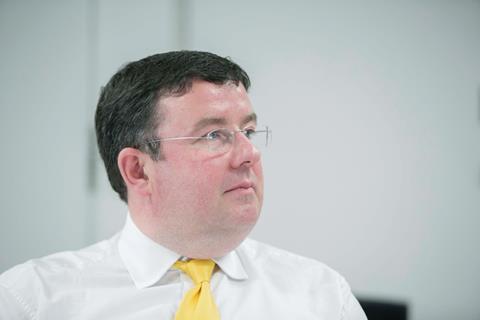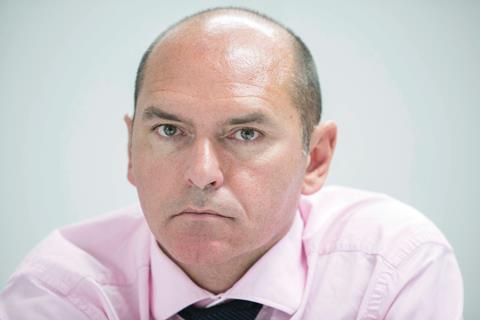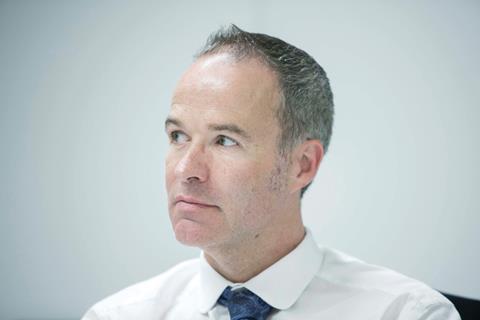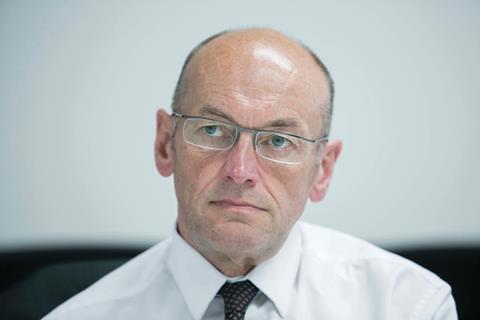At first glance hospital chains might have appeared to be the focus of the Dalton review into new provider models for the acute sector, but HSJ’s roundtable uncovered a raft of other possibilities, reports Claire Read
It was initially characterised as a review of the potential of hospital chains in the NHS, but a recent HSJ roundtable on the Dalton review once again highlighted the breadth of options it is now considering.
Live Q&A with Sir David – 12pm 8 July
In an exclusive interview with HSJ last month, Sir David Dalton stressed that his eponymous review would be exploring a number of new organisational models for the provider sector.
‘It’s like a golfer with just an FT club, a trust club and a management franchise club - what you need is a full set of clubs’
It was a theme re-emphasised during a recent HSJ roundtable which brought together review members - and Sir David - to discuss their work thus far, and its envisaged outcomes.
“I think the exercise got misbranded initially as we’re going to force management chains on everybody, and that’s absolutely not what it’s about,” said Chris Hopson, chief executive of the Foundation Trust Network, to general agreement from his colleagues.
Participants
- Miranda Carter executive director, provider appraisal, Monitor
- Sir David Dalton chief executive, Salford Royal Foundation Trust and leader of the Dalton review
- Stephen Dalton chief executive, Mental Health Network
- Chris Hopson chief executive, Foundation Trust Network
- Jim Mackey chief executive, Northumbria Healthcare Foundation Trust
- Alastair McLellan editor, HSJ (roundtable chair)
- Sarah Morgan head of the Dalton review, Department of Health
- Rob Webster chief executive, NHS Confederation
- Dalton to examine barriers to hospital chains
- Former M&S boss to review NHS management
- HSJ100 roundtable: Number one priorities for chiefs
- Visit HSJ’s Resource Centre for more in-depth reports on a range of health management topics
Mulling new models
Consequently, Alastair McLellan - HSJ editor and the chair of the roundtable - opened the debate with consideration of the multitude of models being considered by the review. Which of these “archetypes” is being greeted most enthusiastically by FTN members, he asked Mr Hopson, who largely demurred.
“What it’s about is that there is a range of different models that will suit a range of different trusts and foundation trusts in different places, and effectively it’s enabling the trust to choose the model that’s relevant for them,” he suggested.
‘Perhaps our future is working with local GPs, mental health services and the voluntary sector - a joint venture or actually a new kind of organisation’
Miranda Carter, executive director, provider appraisal, at Monitor, agreed that no one model offered a panacea. However, she did say that she found some to be of particular note. “I am very interested by the joint venture model and about collaborating along service lines, moving a little away from organisational change being the right way.
“Some [of these arrangements] might be more manageable than a big organisational change which itself brings risks.”
Jim Mackey suggested that in some instances, the choice may actually be of models - plural. “There’s about six or seven categories [which the review is considering] and I think we actually fit about five already,” explained the chief executive of Northumbria Healthcare Foundation Trust.
“Currently we run off nine sites, 2,500 square miles, we’re an integrated care organisation, we’ve got lots of joint ventures with primary care and other entities. So I think we’re not a perfect fit for any one, which I think is probably what this is about - the need for people to find what suits their individual needs and circumstances. And I think you’ll take combinations of them and tailor them to address what you’re trying to do.”
Par for the course
Mr Hopson concurred, and offered an analogy. “It’s a bit like a golfer and currently in their bag of clubs all that seems to be there is an FT club, a trust club, and a tiny club that’s been used once that’s called a management franchise club - what you need is a full set of clubs.
“I think the whole purpose of the review is to ensure that everyone is aware there’s actually a much broader range of clubs than you might think.
“Its job is not just to do that education piece, but also to ensure that when you reach for the club and you use it, it works really effectively and there are no barriers to its use.”
‘We haven’t got the time to be doing these things… Almost every six to 12 months some new big idea comes up which gets in the way’
Therein, of course, lies the rub. Sarah Morgan, head of the Dalton review, explained that “the review has already uncovered much good practice, with several organisational models being used. The challenge, however, is that we are also finding many barriers to implementing such practice.”
“I think there is a really maturing sense that there’s an opportunity to get the form we require for the function,” said NHS Confederation chief executive Rob Webster. “I think the [challenge] in all this though is the regulatory regime and the pipeline.”
He drew on his experience in the community sector to illustrate the problem. “No standalone community trusts are FTs at the moment,” he pointed out. “I think the mood among them is a fairly positive and optimistic one. But what many are saying is perhaps our future is working with local GPs, and with mental health services, and with the voluntary sector, to create something which looks different again - which might be a joint venture or actually a new kind of organisation.
“I think what we may see are some joint ventures or special purpose vehicles being created for that kind of collaboration, which then allows people to demonstrate they’re viable and sustainable. But that may not be within the current risk regime which the [NHS Trust Development Authority] wants to apply.”
Caught on Monitor
And what of Monitor? How is the risk regime they currently apply impacting on organisational change? There are surely few people who can speak with more expertise on those questions than Jim Mackey. Three years ago, his organisation began the process of acquiring North Cumbria University Hospitals Trust. It is still not complete, and a third due diligence exercise - which the organisation is required to complete by Monitor - is now under way.
“We haven’t got the time to be doing these things,” argued Mr Mackey. “The whole thing, in the interest of patients, has to free itself up. When we set off in this process, we didn’t have the Health and Social Care Act, we didn’t have competition law, we’d never heard of special measures. So almost every six to 12 months some new big idea comes up which gets in the way.
“What’s happened in North Cumbria is it was not in great shape, had a period of serious decline over a year or 18 months, then special measures, then they’ve been reassembling the bricks. So we’re nearly back where we started three years ago.
‘There’s a lot of staff in there who have just been through a terrible time. Eleven [chief executives] in 10 years. How is that helpful?’
“There’s a lot of staff in there who have just been through a terrible time, probably their whole career, some of them. Eleven [chief executives] in 10 years. It’s like Newcastle United. How is that helpful?”
Miranda Carter of Monitor revealed that the reason the regulator was especially keen to be involved in the Dalton review “was the barriers point. We really want to see change, and we want to see sustainable delivery of care. Clearly, we want to make sure we are not creating an unnecessary burden.”
She continued: “We have looked at changing the threshold of when we might get involved in transactions. We are trying to do it focused on risk. Certainly around the competition [aspect], which is a lever in the system. [We want] to have early conversations and understanding of how, if there is an aspect of competition through the transaction you’re undertaking, the organisation is thinking about patients’ interests.
“If we can give help earlier on, we can save some of the transaction costs that are unnecessary because people might realise that, well, in this situation the competition barrier may be too high or I may need to think about structuring the deal slightly differently.”
Tainted image
The issue of the current financial of organisational change was one on which Stephen Dalton built. “I think there is something about the cost of the transaction that is all important,” commented the chief executive of the Mental Health Network.
“These are not small amounts, and the money organisations spend on getting over that hurdle is money they’re not investing in making the change.”
While greater speed is required from regulators in some aspects of organisational change, patience is likely required in others. “In my career in the NHS, what happens is that is you’re successful, you go to support someone or an organisation that isn’t successful, and you become the problem,” reported Mr Webster.
“We’ve got to change that. You can’t be tainted just because you dared to help. I think in that environment, what we must do is have a set of arrangements through the TDA, Monitor, the CQC and the [Department of Health] which recognises that range of risks and is tolerant of them for the period that is required so you can implement the plan.”
‘For me, you give up some ability to self-determine by having a long record of not proving yourself’
Ms Carter said Monitor was seeking to make changes here. “We recognise that if an organisation is going into a challenged organisation, there will be problems that will take a period of time to turn around; we cannot expect they will just go in and within two months everything is going to be fixed,” she said.
“It is about them really understanding the risks they’re taking on; really understanding what’s driving the problems at the organisation they’re taking on so that then they’ve got a credible plan to turn that around.
“And then we [need to] believe that it’s a plan [that can be delivered] within a reasonable timeframe, and we have a way of just checking in post-transaction that you’re going according to your plan. That’s what we want to bring in, so it is about being permissive.”
Question of governance
Challenged by Mr McLellan on how she would define permissive in that context, Ms Carter argued that “for me, it all comes back to a governance question. In a transaction, if we are confident that as an organisation you are acutely aware of the issue and you have got a plan to address it and we can understand the rationale and that it’s not putting patients at undue risk of harm, we can be permissive around that.”
Rob Webster suggested this might be an area in which it might be desirable to “unpack” the idea of quality. “So safety’s a given throughout this period, but your experience as a patient might change because we might be fundamentally changing the way we deliver care.”
‘There needs to be something in credentialing that is actually about your ability to extend that across a number of trusts’
“So safety’s the red line,” suggested Mr McLellan. “Experience is perhaps where you seek the patience of your patients, outcomes you would look at for improvement but perhaps over the longer term.”
“But it’s the way you’re measuring it and what the balance is,” pointed out Mr Webster. “Because what will happen is you will have prevented some people ever coming into hospital. So how do you measure that?”
Considering ‘credentialing’
Measurement came into play during another big theme of the debate: “credentialing”. As discussed by Sir David in his interview with HSJ last month, this is the idea of accrediting certain organisations as having the capability and capacity to help others which are struggling.
At the roundtable event, he reported that the review panel’s thoughts on this were at a very early stage.
“We’ve commissioned a piece of work which will allow us to understand what the components of this could be,” he explained. He shared his personal view, though, that organisations should not have to go through an arduous process to be credentialed and that assessment should be based on existing data. He also said he thought that the process of being credentialed should be a voluntary one - though receiving help may not be.
“I think that’s hard, but for me we need to be able to say you give up some ability to self-determine what your organisational shape is by having a long track record of not being able to prove yourself on all the tests that got you into the position you’re in,” argued Sir David.
‘It feels like in the pecking order that we’ve got, we’ve got a load of predators and a load of cattle and the trusts are the cattle and FTs are predators’
“That’s not a reflection on individuals or the probably fantastic care that is taking place in parts of those organisations,” he added. “But it’s a reality that we have to face; that we’ve got organisations which are trapped [in the FT pipeline] because every assessment shows that they are not able to get to a different place. So we ought to presume that those that have the track record can offer support and should be enabled to.”
Mr Hopson suggested that “there’s a clear endorsement of the credentialing principle” by the review panel, but said there were still some nuances to bring out.
He suggested one danger was the assumption that “because you are very good at running your trust, you are capable of then systematising that knowledge and then passing it across to somebody else”.
He continued: “The CQC and Monitor data may capture your ability to run your trust, but there needs to be something in credentialing that is actually about your ability to extend that across a number of trusts. Which is not quite as simple as it might seem.”
Stuck in the pipe
Sir David agreed. “I think what I have in my mind is about having a really fast stream where there is consent,” he said. “So if an organisation is stuck in the FT pipeline and someone sees that there could be a solution here and there is, through some process of accreditation, an organisation that is seen to have the capability and capacity to deal with that, this is fast-tracking it.
“That’s not to say that it should get in the way of where people do want to collaborate and work things out together to see whether they can come up with a solution even though they might not have volunteered [to be credentialed]. But it may be that our regulators pay a little bit more interest than they might do in organisations that have a prequalified stamp of approval.
‘Many would say 2016 becomes a moment when the world begins to change and gets very difficult’
“And if we were to say we’re having this process, we’re identifying these organisations, that may mean we are lowering risk generally, and so you, the Treasury, need to be less concerned if we’re going to those organisations to try to get something done. Therefore we might be able to deal with the issue of the transaction time and all the checks and authorisations within that.”
It was on a question of time with which Mr McLellan closed the debate. In 12 months, what changes will we see as a result of the Dalton review? Mr Webster said his personal opinion was the assumption that every trust must become an FT will have disappeared. “I think the way we currently think about FT status is unhelpful,” he said, echoing the view of many others who were concerned about its binary nature.
“It feels like in the pecking order that we’ve got, we’ve got a load of predators and a load of cattle and the trusts are the cattle and FTs are predators. But the world we’re in isn’t like that at all. So what we need to do is work out how are we creating the right environment for viable and sustainable providers?
The 2016 cliff
“At the moment what we’re doing is answering the question of whether an organisation is viable or sustainable through the FT pipeline. By forcing organisations to go through the pipeline, we are opening up what happens in every health economy. So the first thing you recognise a year from now is that there is now the input from the Dalton review that says in each area there is a different answer based on something that’s permissive.”
Sir David echoed this. “My view is that within 12-24 months there will be understood solutions where perhaps the majority of those [in the pipeline] will have an association with an FT but not all.
“And there will be other governance arrangements that will be deemed to be acceptable. Not that you have to be a public interest or a community interest company with governors and membership.”
‘No political party is going to put information back in the bottle’
Stephen Dalton argued that how the review changed the situation depended largely on how much traction it was able to get. “If it’s out there, and it sparks thinking, it will enable people to move on,” he suggested. “I think for the people who I represent in mental health and community services, I think they’ll move quickly because they’re a bit under the radar.
“And one of reasons why they’ll move and they’ll move within the next three years is that many of them are facing a 2016 cliff. And I think they won’t wait for that cliff, they’ll do something about it. Even if by today’s standards they may be high performing organisations, financially secure, privately many would say 2016 becomes a moment when the world begins to change and gets very difficult.”
Of course, by 2016 there is a chance that there will be a different government overseeing the health service. Does the urgency go out of his review’s work if Labour are elected and introduce the preferred provider model, Mr McLellan asked of Sir David? His answer: no.
“No political party is going to put information back in the bottle,” he pointed out. “Politicians of whatever persuasion will be really interested in the view the public have about the organisations they’re receiving services from.
“Whatever government we have, they will have a view about success and failure and so there will always need to be solutions to deal with that.”



































4 Readers' comments